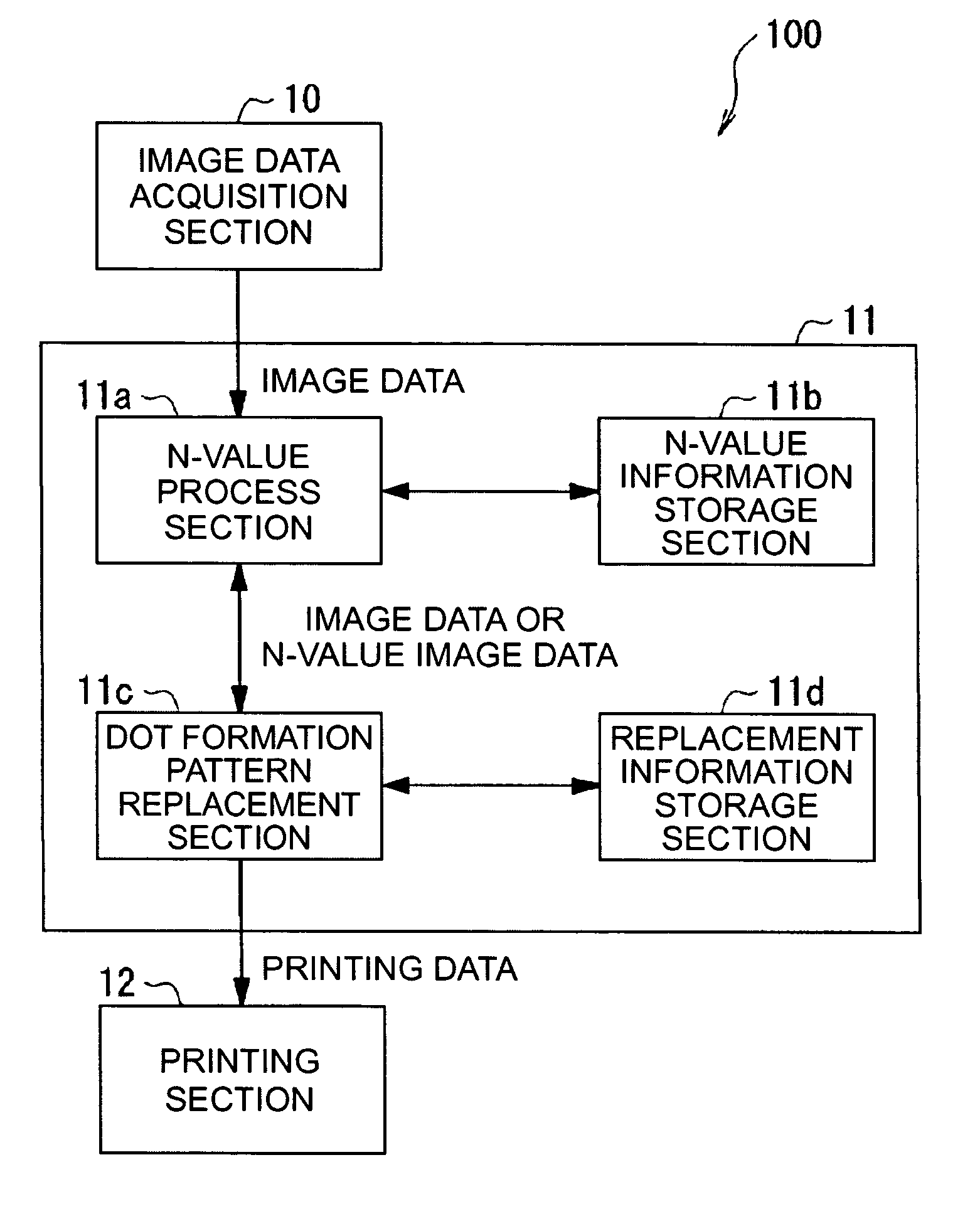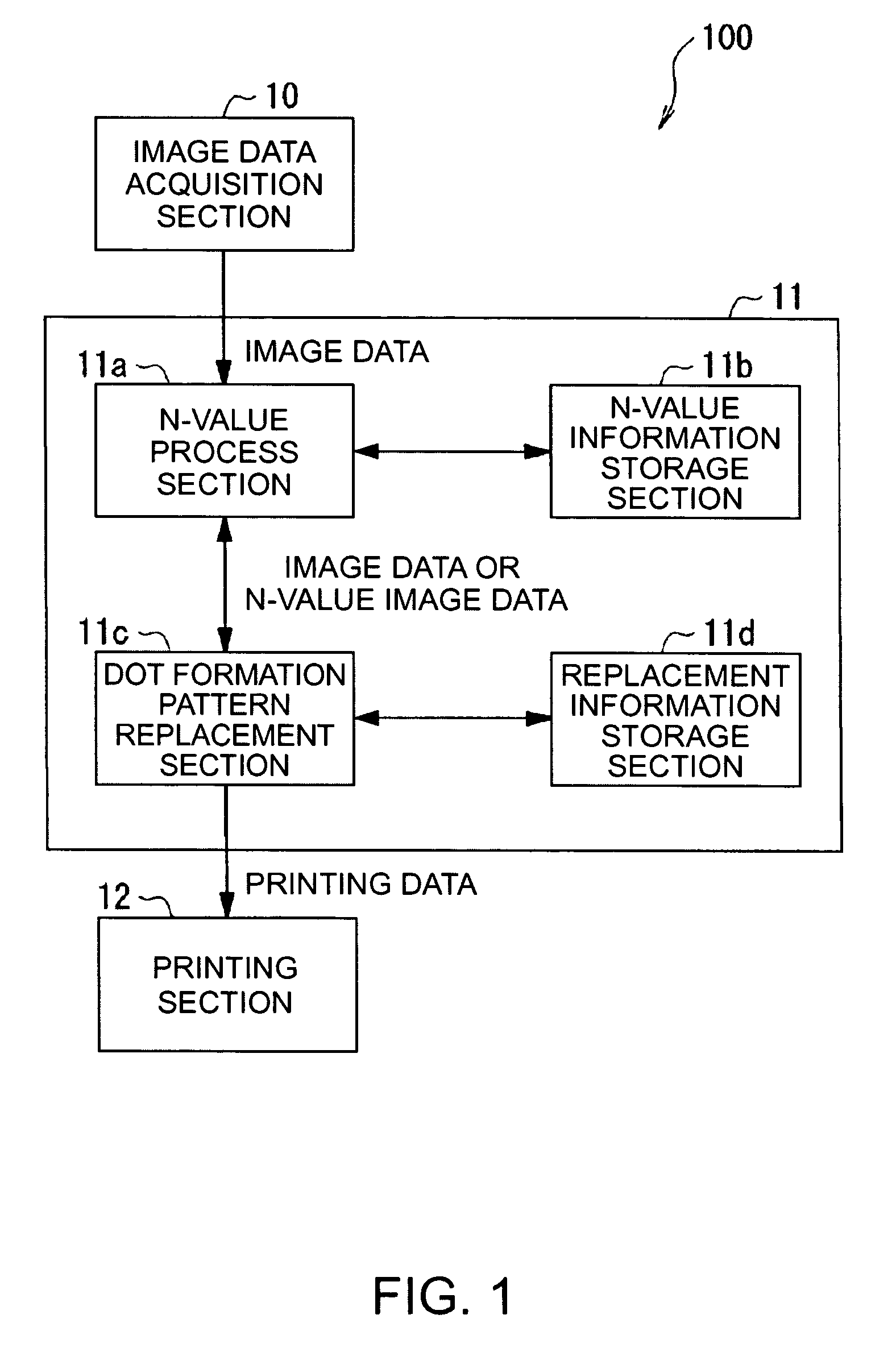Printing device, printing device control program and method, and printing data generation device, program, and method
a printing device and control program technology, applied in the direction of instruments, visual presentation, computing, etc., can solve the problems of ink deflection, printing head manufacturing deviation, and drawing a longer printing time compared with other types of printing devices such as electrophotographic laser printers or others
- Summary
- Abstract
- Description
- Claims
- Application Information
AI Technical Summary
Benefits of technology
Problems solved by technology
Method used
Image
Examples
first embodiment
[0289]Described below is a first embodiment of the invention referring to the accompanying drawings. FIGS. 1 to 11B are all a diagram showing the first embodiment of the invention, i.e., a printing device, a printing device control program and method, and a printing data generation device, program, and method.
[0290]Described first is the configuration of a printing device 100 of the invention by referring to FIG. 1. FIG. 1 is a block diagram showing the configuration of the printing device 100 of the invention.
[0291]As shown in FIG. 1, the printing device 100 is of a line-head type, configured to include: an image data acquisition section 10; a printing data generation section 11; and a printing section 12. More specifically, the image data acquisition section 10 acquires image data from any external devices, storage devices, or others. The image data is the one configuring any predetermined image. The printing data generation section 11 generates printing data for use of printing i...
second embodiment
[0357]Described next is a second embodiment of the invention by referring to the accompanying drawings. FIGS. 12 to 16B are all a diagram showing the second embodiment of the invention, i.e., a printing device, a printing device control program and method, and a printing data generation device, program, and method.
[0358]In the second embodiment, the printing device and the computer system both are in the similar configuration as those in the first embodiment shown in FIGS. 1 and 2. The second embodiment is different from the first embodiment in the respect that the printing data generation process in step S104 of FIG. 5 is replaced with the process of FIG. 12.
[0359]Although the printing data generation process of FIG. 12 is the same as that of the first embodiment in principle, differences lie in the following respects. That is, a replacement process is executed at the same time as an N-value process, and banding avoiding dot formation pattern data for use of replacement based on no...
third embodiment
[0401]Described next is a third embodiment of the invention by referring to the accompanying drawings. FIGS. 17 to 19 are all a diagram showing the third embodiment of the invention, i.e., a printing device, a printing device control program and method, and a printing data generation device, program, and method.
[0402]In the third embodiment, the printing device and the computer system both are in the similar configuration as those in the first embodiment shown in FIGS. 1 and 2. The third embodiment is different from the first embodiment in the respect that the printing data generation process in step S104 of FIG. 5 is replaced with the process of FIG. 17.
[0403]Although the printing data generation process of FIG. 17 is the same as that of the first and second embodiments in principle, differences lie in the following respects. That is, a replacement process is executed after an N-value process, and banding avoiding dot formation pattern data for use of replacement based on nozzle in...
PUM
 Login to View More
Login to View More Abstract
Description
Claims
Application Information
 Login to View More
Login to View More - R&D
- Intellectual Property
- Life Sciences
- Materials
- Tech Scout
- Unparalleled Data Quality
- Higher Quality Content
- 60% Fewer Hallucinations
Browse by: Latest US Patents, China's latest patents, Technical Efficacy Thesaurus, Application Domain, Technology Topic, Popular Technical Reports.
© 2025 PatSnap. All rights reserved.Legal|Privacy policy|Modern Slavery Act Transparency Statement|Sitemap|About US| Contact US: help@patsnap.com



